Identification
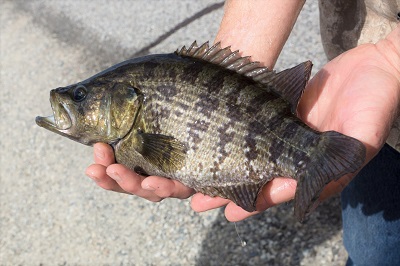 CDFW photo by Randy Lovell
CDFW photo by Randy Lovell
- Deep, laterally-compressed bodies
- Brown backs and sides with a metallic green to purplish sheen
- 6-7 irregular vertical bars on their sides
- Adults average 0.5-2 pounds in weight
Distribution
Though native to California waters, Sacramento perch have been displaced from most of their native range due to habitat degradation and the introduction of more competitive sunfish species, such as bluegill. Historically, they could be found throughout the Central Valley; however, they currently exist mainly in locations where they were stocked, consisting of farm ponds, reservoirs, and recreational lakes.
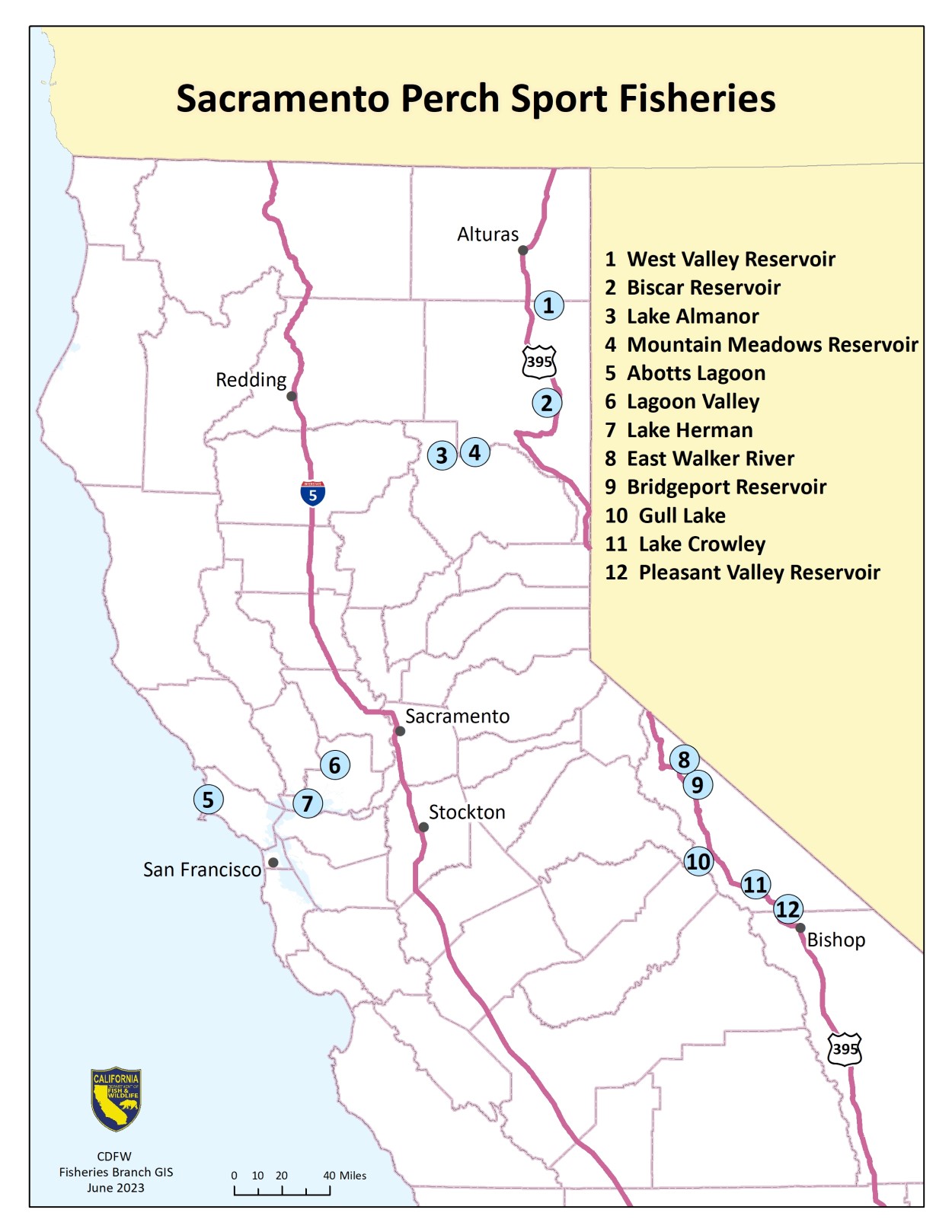 (click to enlarge)
(click to enlarge)
Angling
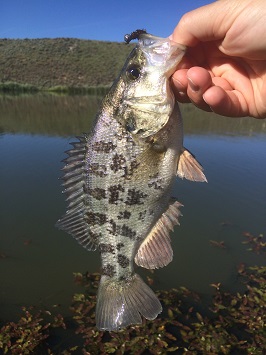 CDFW photo by Paul Divine
CDFW photo by Paul Divine
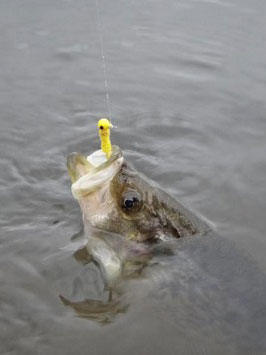 CDFW photo by Paul Divine
CDFW photo by Paul Divine
Though sedentary in nature, Sacramento Perch can provide exciting action once hooked and are often compared to crappie in terms of fighting behavior. Light tackle for both fly and spinning gear will make the most sport for this gamefish. Generally, fishing for Sacramento Perch is good spring through the fall (April-October) when water temperatures are above 60°F. In the late spring and early summer you can target them in shallow water where they will be spawning. Look for water 1-3 feet deep in and around submerged vegetation and debris as well as over sandy or gravel bottom. During the rest of the year look for areas near drop-offs and weed beds as well as areas with some sort of structure like rock piles and submerged wood.
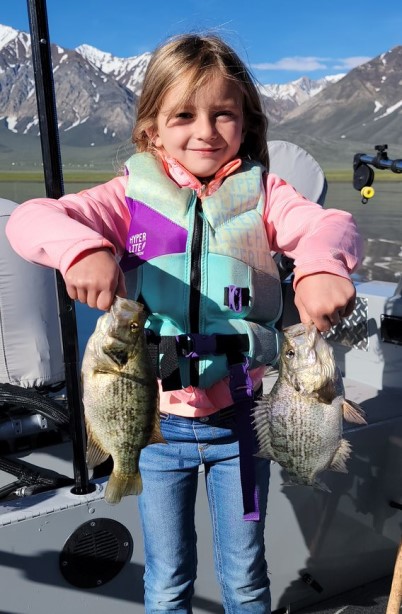 CDFW photo by Max Fish
CDFW photo by Max Fish
The best Sacramento Perch fishing is in the spring as the fish move into shallow waters to spawn. Anglers have success using lures and flies that resemble their preferred forage, as well as ‘reaction baits.’ Much like fishing for other sunfishes, stripping nymphs and streamers is recommended for fly fishing while using crappie jigs, small rubber worms, and small hooks with small amounts of bait are recommended when using conventional gear. Chironomid midges, aquatic insects/larvae, crustaceans and small fish are all important foraging options, so it is important to “match the hatch” when targeting Sacramento Perch. Light spinning tackle with 2-6 lb. line typically used for trout or crappie fishing are perfect equipment for Sacramento Perch. Small spinners, spoons, minnow baits and 2-3” tube/curly tailed jigs weighing 1/32 to 1/8 oz. are popular lures to use. Jigs are extra effective if they are tipped with a crappie nibblet, mealworm or small piece of nightcrawler to add extra enticement. Fish can bite any time during the day, but dawn and dusk are the best times to target Sacramento Perch. Sacramento Perch are typically found adjacent to aquatic plants/weeds, rocks and brush where they can ambush prey and avoid predators, although some populations in large reservoirs (e.g. Crowley) move offshore in the late summer.
Trolling/Wind Drifting
- Popular any time of year and is especially good during the warmer summer months when fish spend more time in the relatively deeper water.
- Use heavier lures to target deeper-holding fish on or near the bottom.
- Controlled wind drifting can help cover water and find appropriate depth to locate congregations of Sacramento Perch.
Float tubes/Pontoons/Kayaks
- Popular in the spring when Sacramento Perch are closely oriented to shallow habitats during spawning.
- Target areas of structure, such as large rocks, aquatic vegetations, submerged rocks and tule beds.
- Kayaks and pontoons are especially adept for wind drifting tactics.
- Be aware of incoming weather and associated strong winds. Stay close to shore to avoid being blown out into the lake if using small watercraft.
Fly Fishing
- Fly fishing from shore in the spring can be very effective.
- Flies such as poppers, leeches, wooly buggers, streamers, scuds, and small baitfish patterns can be effective.
- Flashy body materials, coupled with marabou tails in white, yellow, orange, brown, green or combinations thereof are popular.
- Heavy bead heads or jig patterns are excellent as they provide an up and down swimming action when stripped or trolled.
In the News